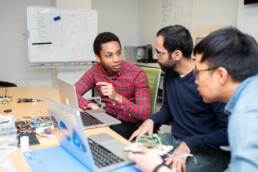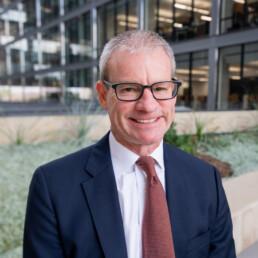
An op-ed By Bob Gilbert
It’s been 40 years since I walked into my first civil engineering class at the University of Illinois Urbana-Champaign. The curriculum I studied back then is largely the same as what our students at The University of Texas at Austin experience today.
So much has changed since then, but our discipline hasn’t; it’s been stagnant. We build roads the same way we did in the 1950s, we treat water pretty much the same. So why haven’t we changed? Because we didn’t have to; we were comfortable.
But now we do. The way we live in developed societies is not sustainable. We don’t have the resources; we don’t come close to meeting everyone’s needs; and our environment can’t take the punishment we’ve unleased on it since the industrial revolution.
Civil engineers build the backbone of society: the places we live, work and play; the ways we get around; the systems that provide the water and energy we thrive on. If we change how we educate our civil engineering students, that can start a cascade of change in how we build our infrastructure to meet this critical moment.
That’s why we at the newly named Maseeh Department of Civil, Architectural and Environmental Engineering at UT Austin want to lead a revolution in this field. As one of the largest and highest ranked civil engineering programs in the nation, we believe we can shepherd this transformation to modernize our curriculum to confront the big problems of today — climate change, limited resources, growing populations, outdated and crumbling infrastructure and many more.

It’s not going to be easy, and it’s not something we can do on our own. We call on the communities of civil, architectural and environmental engineering to come together to imagine a new way to educate our students in a manner that is holistic and civic-minded.

One way we’re doing this is something I call Engineering in the Community. That means working directly with the people and organizations that will use and be affected by the systems we engineer. Our students are working with elementary schools to create rain gardens that help the environment on their campuses.

We can’t just educate our students in the math and science and design concepts they need to build infrastructure. They need to be innovative and entrepreneurial to produce new technologies and ways of doing things. They need to manage systems of engineering components and people. They need to be familiar with public policy, which ultimately decides what we can and can’t do.

We need engineers who have staffed for legislators or served in mayor’s offices; engineers who work in communities with limited resources; engineers who can communicate and reach across disciplines to find answers.

This isn’t just a civil engineering challenge either; it’s one for the entire field. We’re all so busy serving our own students that a mechanical engineer, for example, can’t easily take a civil engineering course to broaden their education. There’s little flow between engineering disciplines, and that needs to change. We need to give students a more holistic experience so they have the capability to solve big problems that don’t fit neatly into a box of a single discipline.
As civil engineers, it is on us to come together and acknowledge that we can no longer be impartial observers. We are the designers of society, but we also need to be leaders.

We will be hosting a Disruptive Innovation workshop in the coming year to bring together leaders in our profession to help chart our future. Join us, and together we can revolutionize how we educate students to design, build and maintain the next generation of infrastructure that will help us deal with the most important challenges in our society.

Bob Gilbert is the Cockrell Family Chair of Departmental Leadership #3, Nasser I. Al-Rashid Chair in Civil Engineering and Department Chair of the Fariborz Maseeh Department of Civil, Architectural and Environmental Engineering at The University of Texas at Austin.